Fattoush and Tabbouleh are two popular Lebanese salads that have captured the taste buds of food enthusiasts worldwide. While both salads offer refreshing flavors and a delightful medley of fresh ingredients, there are key distinguishing characteristics that set them apart. As a person of Lebanese heritage and having grown up on both these salads, in this article, I'll dive into the key differences between Fattoush vs Tabbouleh.
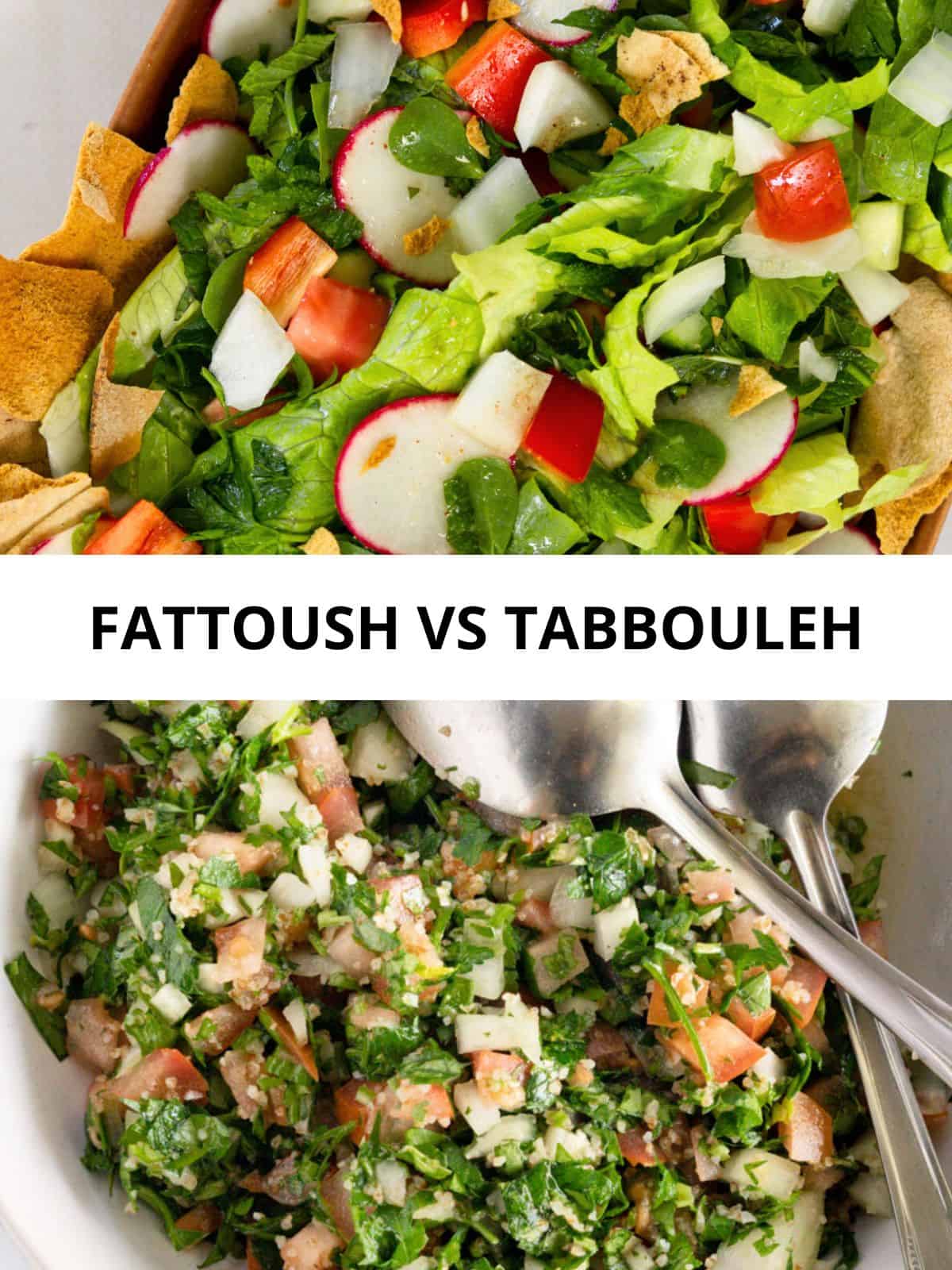
A Quick Comparison
| Fattoush | Tabbouleh | |
|---|---|---|
| Main Ingredients | Mixed vegetables, herbs, pita bread | Parsley, bulgur wheat, tomatoes, onion |
| Number of Ingredients | 16 (including salt) | 8 (including salt) |
| Texture | Crunchy and robust | Light and fluffy |
| Colors | Colorful vegetable medley | Brilliant green |
| Culinary Uses | Side dish, appetizer, accompaniment to grilled foods and barbecues | Salad, filling for pita pockets / wraps, side dish, mixed plates |
| Key Features | Crunchy chopped vibrant vegetables topped with fried or toasted pita bread | The main ingredient is parsley with a smattering of cracked bulgur wheat |
| Differences in Dressing | Made with sumac and pomegranate molasses | Fresh lemon juice and extra virgin olive oil |
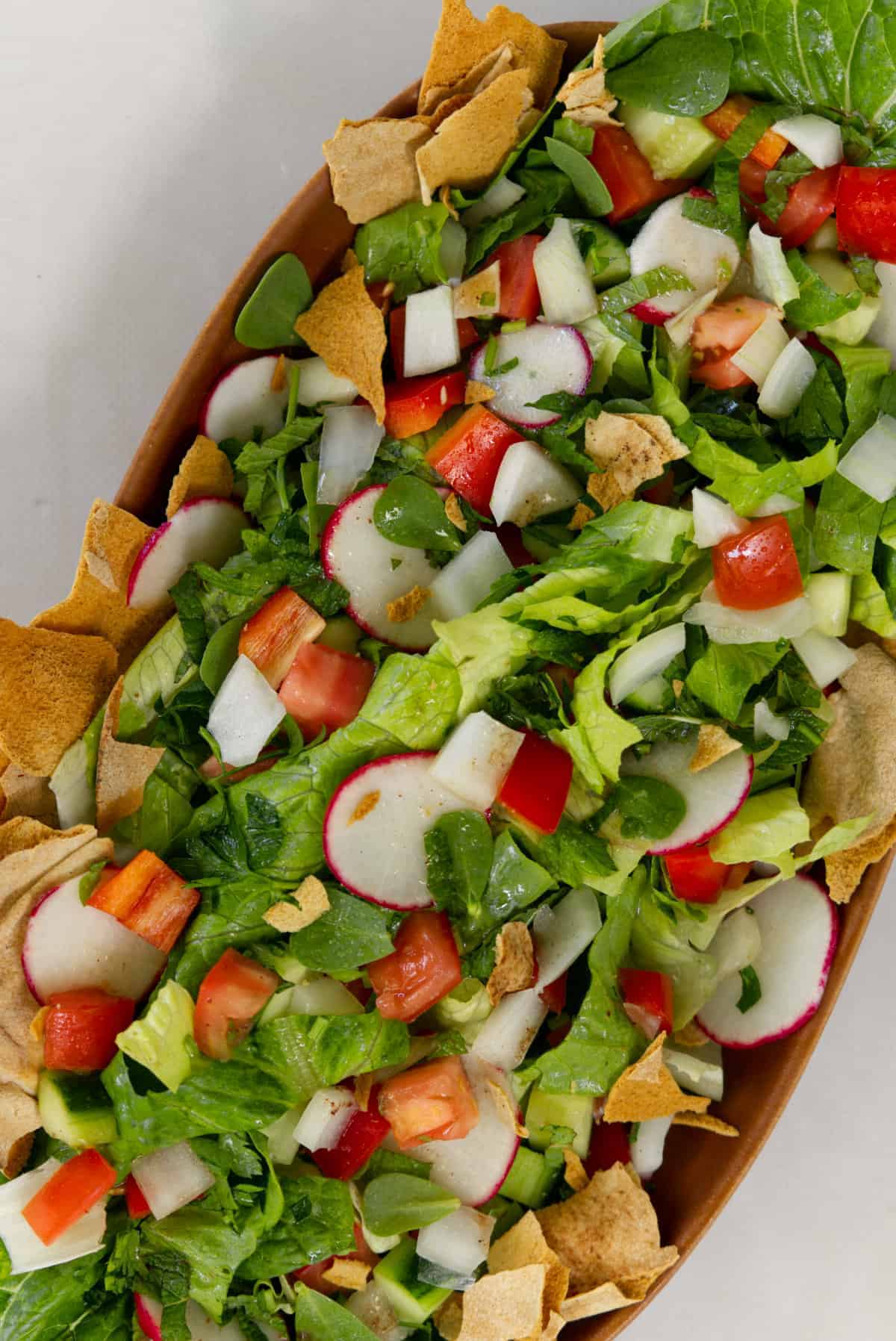
Fattoush Overview
A flavorful crunch.
Fattoush is a salad that tantalizes the taste buds with its crunchy texture and tangy robust flavors.
The main ingredients of Fattoush include a mixed assortment of fresh vegetables such as cucumbers, tomatoes, radishes, and lettuce. A total of 16 ingredients.
The addition of aromatic herbs like mint and purslane adds a burst of freshness.
What sets Fattoush apart is the incorporation of toasted or fried pieces of pita bread aka Lebanese bread, which adds a unique crunch and depth of flavor to the salad.
The dressing typically consists of olive oil, lemon juice, pomegranate molasses and sumac, giving it a tangy and zesty kick.
Fattoush is a versatile salad that can be enjoyed as a side dish, appetizer, or accompaniment to grilled foods and barbecues. Try it with my tofu shish tawook or vegetarian kibbeh.
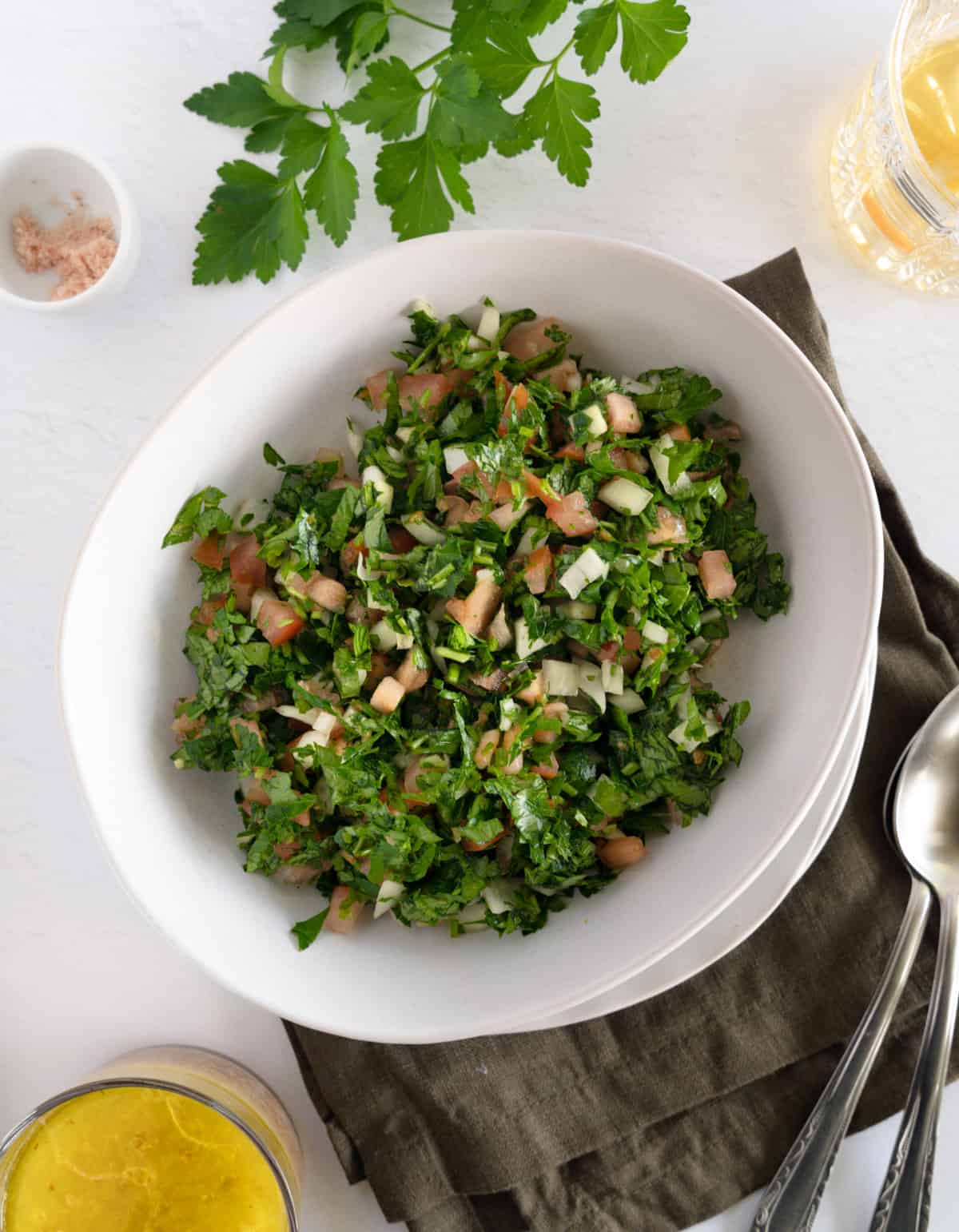
Tabbouleh Overview
A herbal green delight.
Tabbouleh is a lighter, simpler and fluffier salad with only 8 ingredients, and has a more delicate mouthfeel.
The star ingredient of tabbouleh is parsley, which gives the salad its vibrant green color.
The parsley, onion and tomato are finely chopped and mixed with cracked bulgur wheat, and a dressing made with olive oil and lemon juice.
Tabbouleh is often paired with mudardara or falafel or mujadara bulgur.
Key Takeaways
Both Fattoush and Tabbouleh showcase vibrant and visually appealing compositions.
Fattoush displays a colorful medley of vegetables, creating a visually striking salad. The addition of the toasted or fried pita bread adds an attractive golden-brown element to the dish.
Tabbouleh, on the other hand, shines with its brilliant green hue. The abundance of parsley gives Tabbouleh a beautiful and refreshing appearance, making it a visually enticing salad.
Authentic Recipes
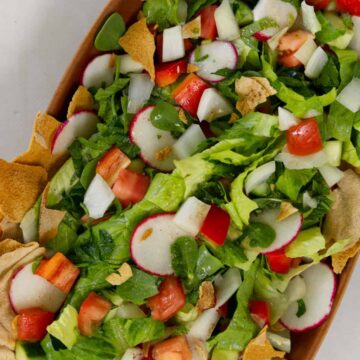
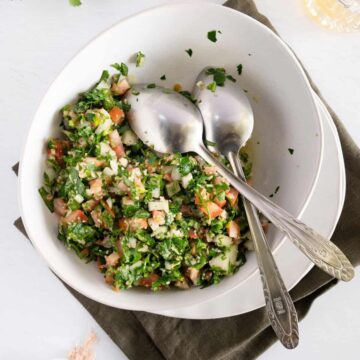
FAQ
Yes, both Fattoush and Tabbouleh are naturally vegan-friendly containing only plant-based ingredients.
No, they are not gluten-free. However, fattoush can be made gluten-free by using gluten-free pita bread or omitting it altogether. Tabbouleh, on the other hand, can also be made gluten-free by omitting the cracked bulgur wheat or replacing it with a grain like cooked quinoa. Check out this vegan quinoa tabbouleh version.
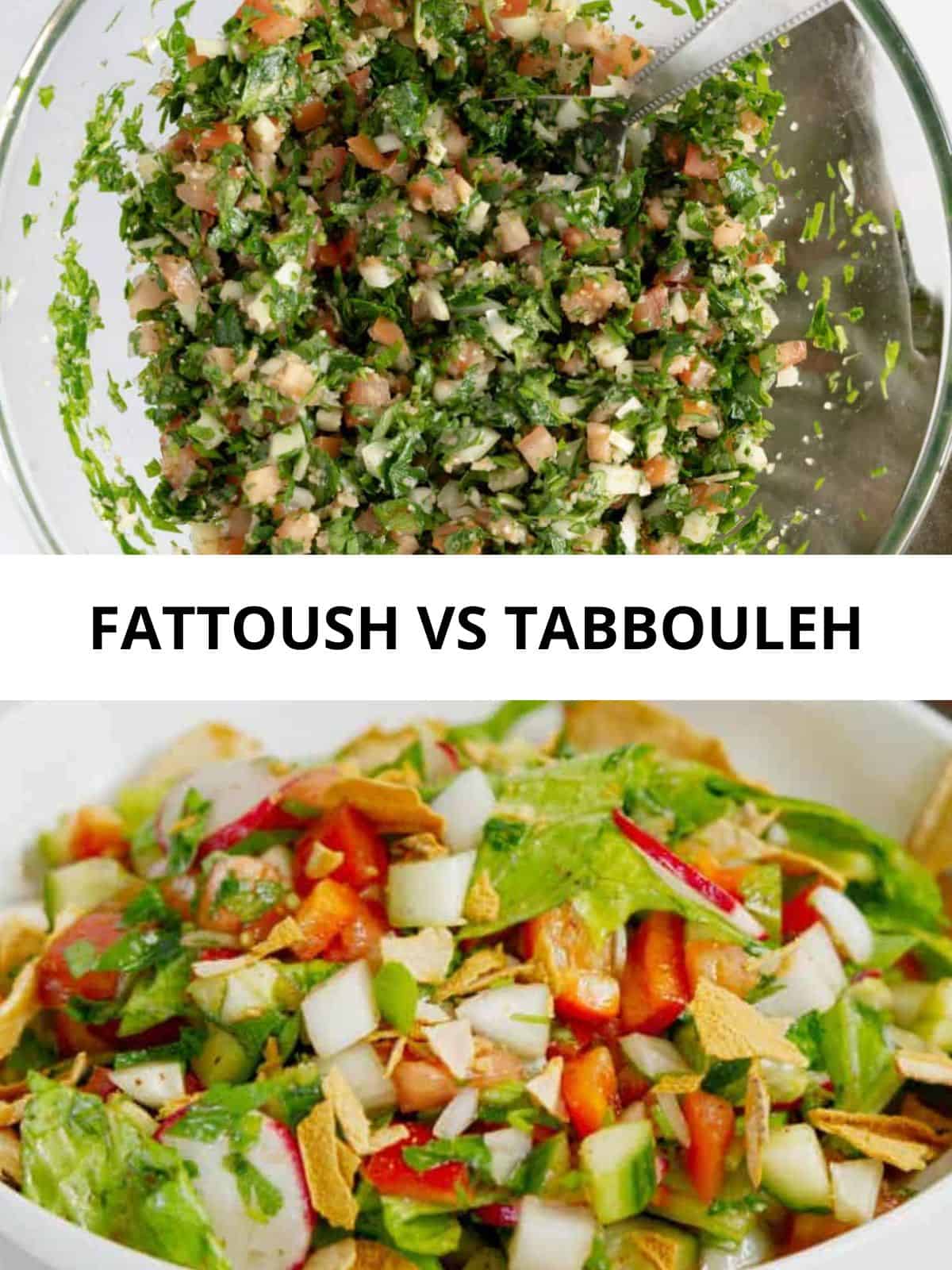
Conclusion
In the comparison of Fattoush vs. Tabbouleh, both salads bring their own unique charm to the table.
Fattoush entices with its robust flavors, crunch from the pita bread, and vibrant vegetable medley.
Tabbouleh delights with its herbal freshness, fluffy texture, and vibrant green color.
Each salad offers a distinct eating experience.
Whether you prefer the tangy and crunchy delights of Fattoush or the herb-infused lightness of Tabbouleh, both salads make for a refreshing addition to any meal.
If you like these salads from Lebanon, check out this curated collection of Lebanese salads.

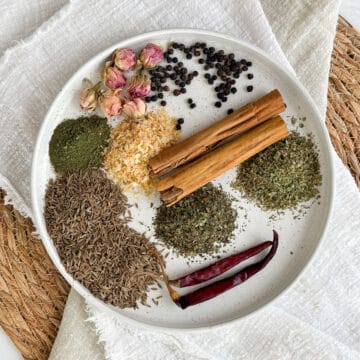
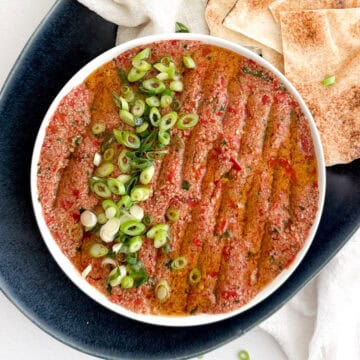
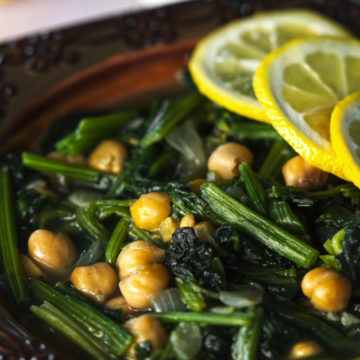
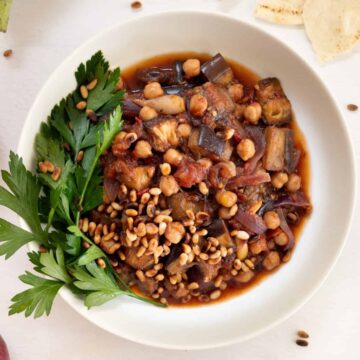
Comments
No Comments